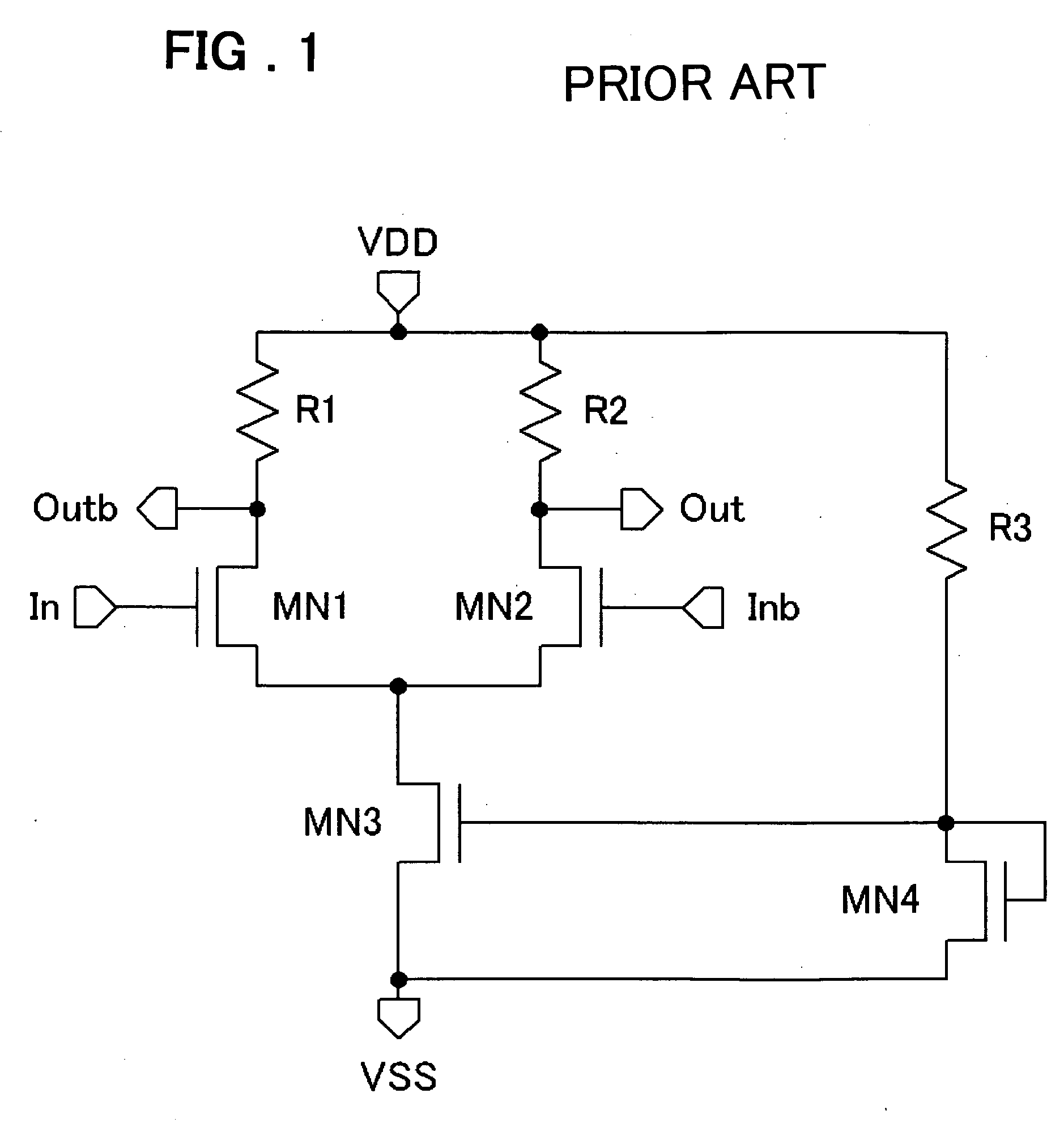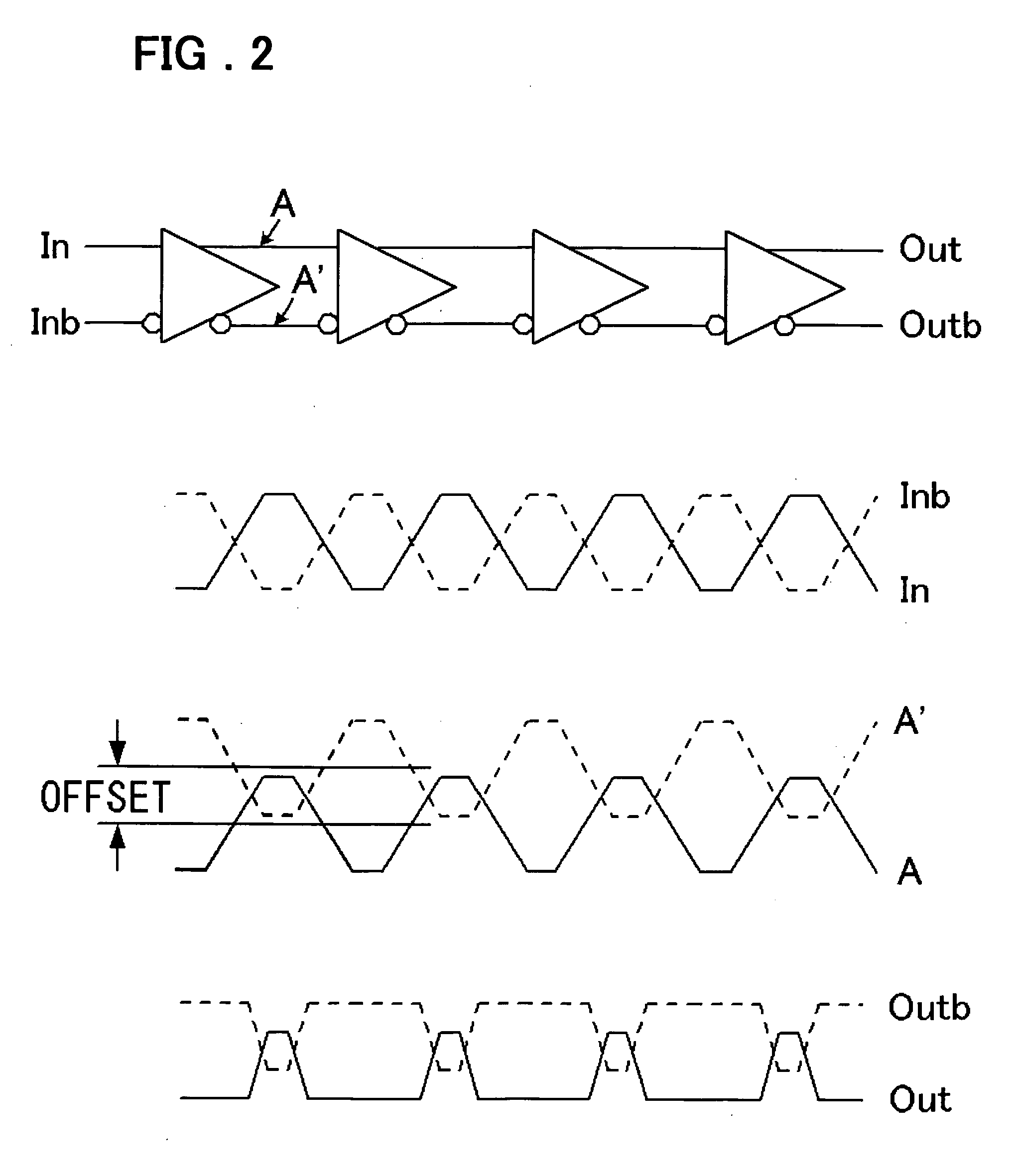Clock buffer circuit
a buffer circuit and clock technology, applied in pulse manipulation, pulse technique, instruments, etc., can solve the problems of clock transmission and other problems, and achieve the effect of improving the reliability of an integrated circuit, simplifying the circuit, and improving the transmission efficiency
- Summary
- Abstract
- Description
- Claims
- Application Information
AI Technical Summary
Benefits of technology
Problems solved by technology
Method used
Image
Examples
first embodiment
[0031]FIG. 4 is a circuit diagram showing a configuration of the bias circuit 6 in a first embodiment of the present invention. The output of a band-gap reference voltage source 23 is connected to the positive-phase input terminal of an operational amplifier 24. The output of the operational amplifier 24 is connected to the gate electrodes of NMOS transistors MN31 and MN32 for performing voltage-to-current conversion. The source electrodes of the NMOS transistors MN31 and MN32 are respectively connected to one end of an internal resistor25 and one end of an external reference resistor 26 through an external resistance terminal 27. The other ends of the internal resistor 25 and the external reference resistor 26 are connected to the VSS power supply. The internal resistor 25 has the same structure as that of the load resistances R1 and R2 in FIG. 3, and the relative accuracy with respect to the load resistances R1 and R2 is guaranteed. The external reference resistor 26 is the resist...
second embodiment
[0041] The mirror ratio of the current mirror circuit constituted from the PMOS transistors MP36, MP37, and MP38 and the mirror ratio of the current mirror circuit constituted from the PMOS transistors MP39 and MP40 in the first embodiment of the present invention shown in FIG. 4 was set to 1:2 and 1:1, respectively.
[0042] In a certain application circuit, it is sometimes preferable that intermediate setting is performed so that the gain becomes constant and the amplitude is reduced. Now, the current mirror ratio of the PMOS transistors MP36, MP37, and MP38 and the current mirror ratio of the PMOS transistors MP39 and MP40 are 1:2+α and 1:1+α, respectively. The current value of a current Io2 that flows through the drain electrode of the NMOS transistor MP35 becomes as follows, using Equation (8):
Io2=(2+α)*I31−(1+α)*I32 (10)
When the resistance value of the internal resistor 25 is expressed as RINT=REXT*(1+α), Equation (10) is transformed into the following Formula: Io2=(2+α)*V...
PUM
 Login to View More
Login to View More Abstract
Description
Claims
Application Information
 Login to View More
Login to View More - R&D
- Intellectual Property
- Life Sciences
- Materials
- Tech Scout
- Unparalleled Data Quality
- Higher Quality Content
- 60% Fewer Hallucinations
Browse by: Latest US Patents, China's latest patents, Technical Efficacy Thesaurus, Application Domain, Technology Topic, Popular Technical Reports.
© 2025 PatSnap. All rights reserved.Legal|Privacy policy|Modern Slavery Act Transparency Statement|Sitemap|About US| Contact US: help@patsnap.com



